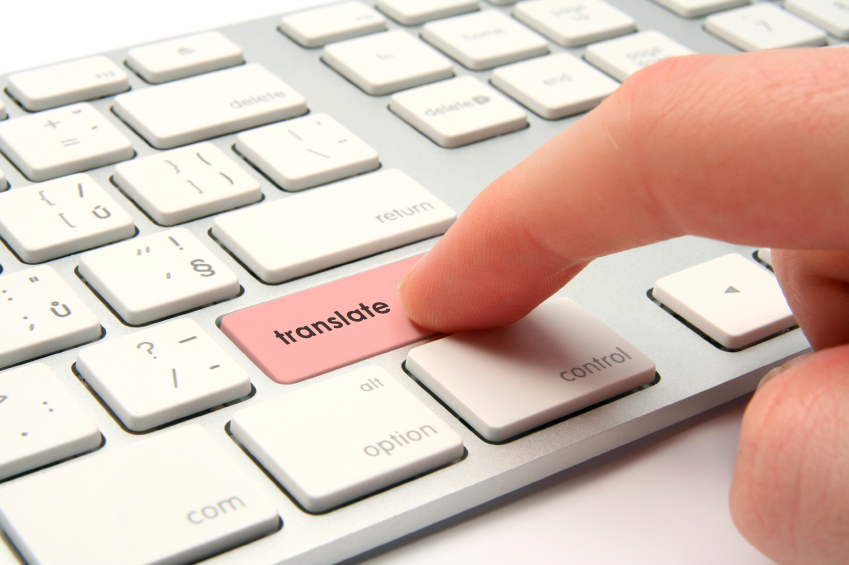

“Translation is the communication of the meaning of a source-language text by means of an equivalent target-language text.” – Wikipedia
A really good translation is error-free, uses the right terminology, is well written, and doesn’t come across as having been translated. The key question is: How do you determine which agency will deliver that kind of translation without trying them out first? Here are some tips to help you.
Wherever you look, there are standardised products. Products with the same brand name consistently have the same characteristics and functionality, are made to the same level of quality, and offer the same user experience. Of course, manufacturing defects sometimes occur, but these are sufficiently rare that we pretty much trust that the products we buy will be what we expect. The orange juice you buy tomorrow may not be amazing, but it will be just the same as it was the last time you bought that brand of juice somewhere else.
Likewise with burger chains. If you walk into a McDonald’s in Shanghai or Paris, the cheeseburger you are served will taste the same, even though the staff are different, the language and currency are different, and the cows the meat came from grazed on different sides of the world. And an iPhone is an iPhone, whatever shop you buy it in: you can be sure that the phones sold by Vodafone, AT&T, Movistar and Co. are to all intents and purposes identical.
Such standardisation can also be found in many service industries. Dentists generally all drill and fill in the same way; Internet service providers’ support chatbots all greet you with “Hello, my name is [whatever], how can I help you today?”; estate agents all show prospective buyers round apartments in much the same manner.
Because so many service providers within an industry do things in a similar way and are therefore predictable, we expect the same from service providers in other industries. If there is a company called Brickson, Mortar & Partners that sells houses on behalf of clients, they get assigned to the “estate agent” box in our head, and we know what to expect of them. And if we come across a firm called AdOration that creates advertising campaigns and TV adverts, it is obviously an “ad agency”.
As soon we label a company in this way, we make assumptions about what they do and what sort of organisation they are. Obviously, we don’t necessarily know exactly what they do. Maybe AdOration works in a completely different way from other ad agencies. But we think we know, so we have certain expectations about what that company should deliver. And this pigeonholing of companies is completely automatic.
Now we turn to the label “translation agency”. Are all translation agencies’ products standardised, like mobile phones and root canal surgery? Well, no. Translation is only partly standardised. Most of the work involved is bespoke and crafted to order, and the more creative the source text is, the less standardised the translation will be. Advertising and marketing texts are a case in point.
Due to the expectations they have formed on the basis of other industries, people often assume that all translation agencies deliver the same product, i.e. “translation”. But that’s not the case.
There are, in fact, big differences between various translation agencies. We are not talking about the size of the company, or the company structure, but rather about three key factors that determine the quality of the translation you will receive. These three factors are by far the most important.
In order to create a good translation, the translator must understand not just the language in which the source text is written, but also what the text is actually about. If a translator is translating a workshop manual for a car, they must have sufficient knowledge about what’s under the bonnet to be able to produce a translation that a car mechanic would understand. The translator doesn’t necessarily have to be a mechanic, but it does help to have some experience of tinkering with cars.
The translator needs to know who they are writing for and what the translation will be used for. Plus, the translator must know the technical jargon that the target group uses. It’s quite common for such terminology not to be found in any dictionary, which means the translator cannot simply look it up.
However well the translator understands the source text, and however well they understand the target group, errors happen. It is extremely difficult to spot your own errors and weaknesses, which is why it is vital that the translation is proofread by someone other than the translator to ensure the final version is top-notch and faultless. Although the number of translation errors is likely to be inversely proportional to the translator’s level of understanding of the source text, even the best translator makes mistakes. And the average freelance translator is prone to producing plenty of spelling or punctuation mistakes, misunderstandings and overly literal translations.
So, the tips I promised:
The quality of the texts your company publishes sends out a powerful signal. Your company and its products will be assessed and judged based on the standard of your website, your brochures, your product documentation and your business correspondence.
Don’t do your company a disservice by “saving” money buying mediocre, poor or just plain awful translations. The good reputation that high-quality texts buys you is worth far more than the extra money they cost. What’s more, you’ll avoid all the irritation and additional work involved in fixing a bad job. Your time costs money, after all!